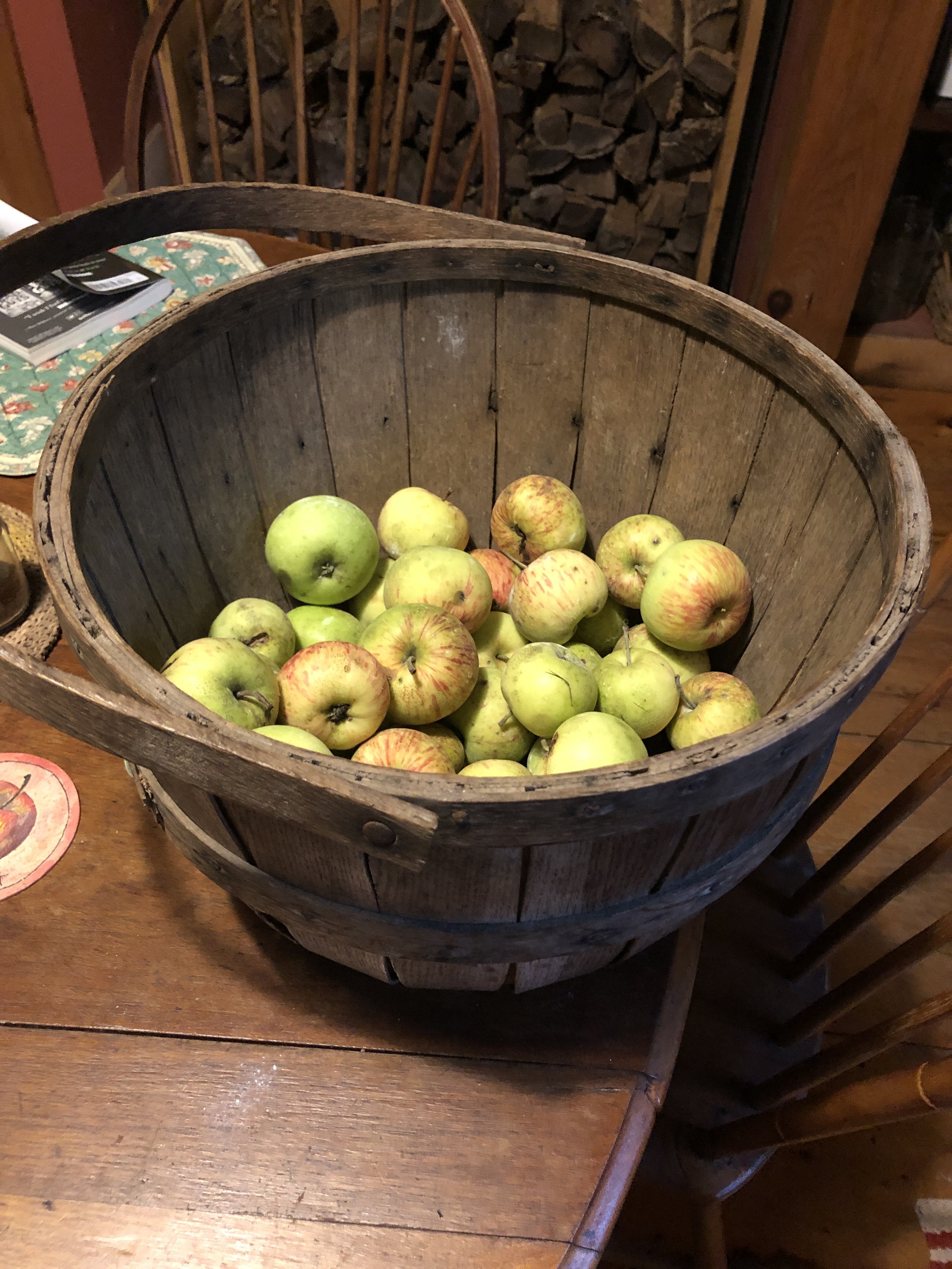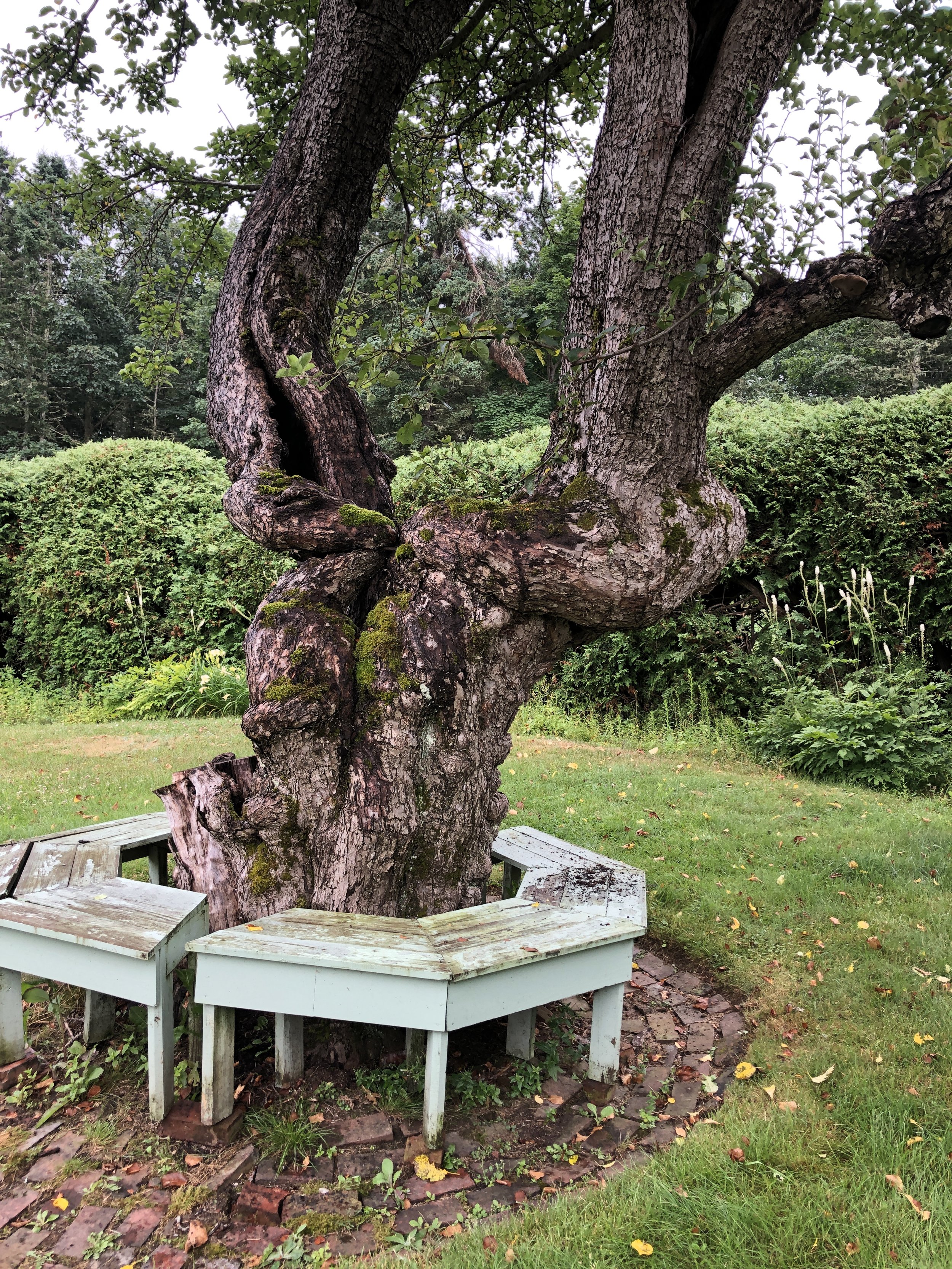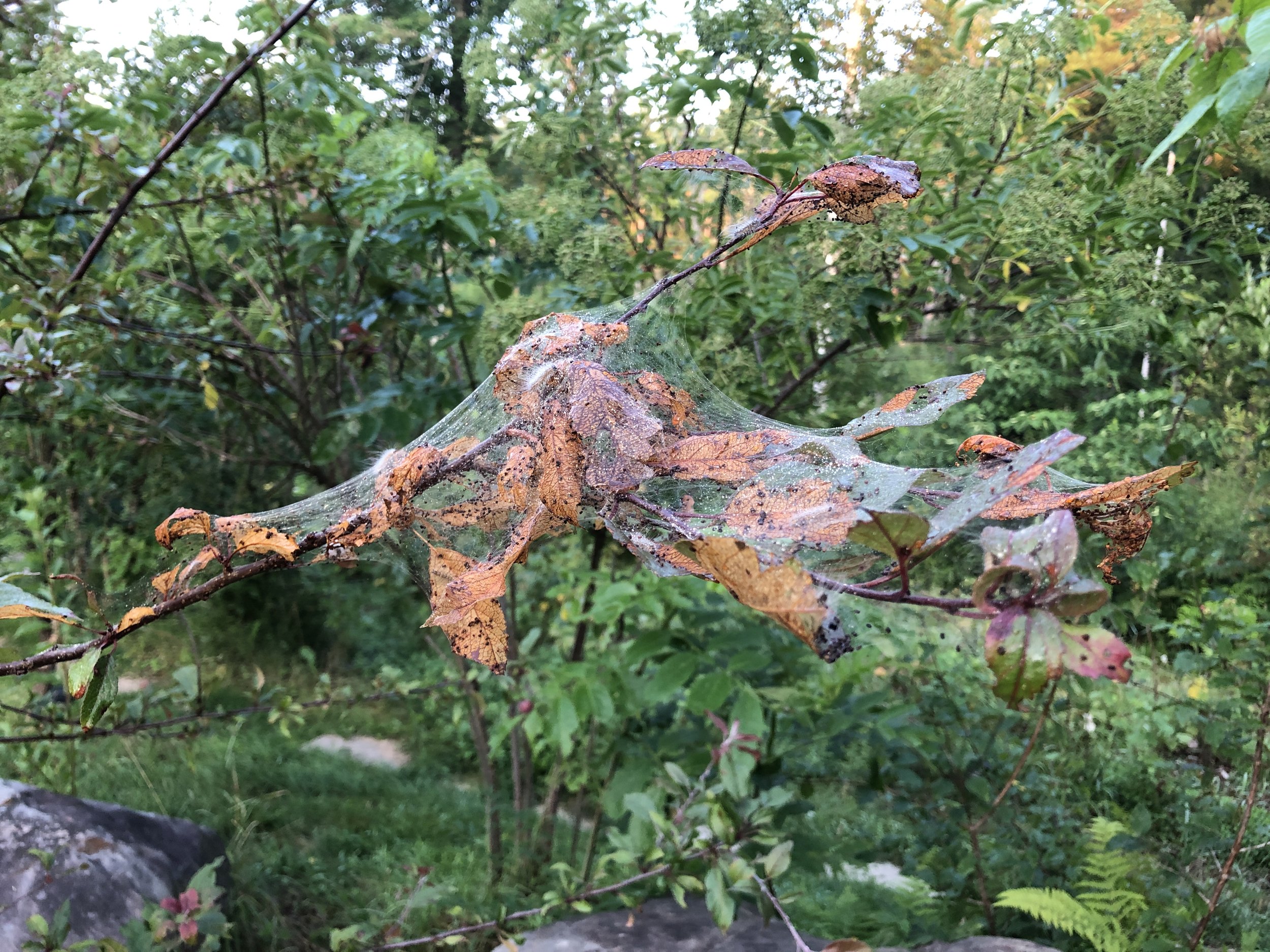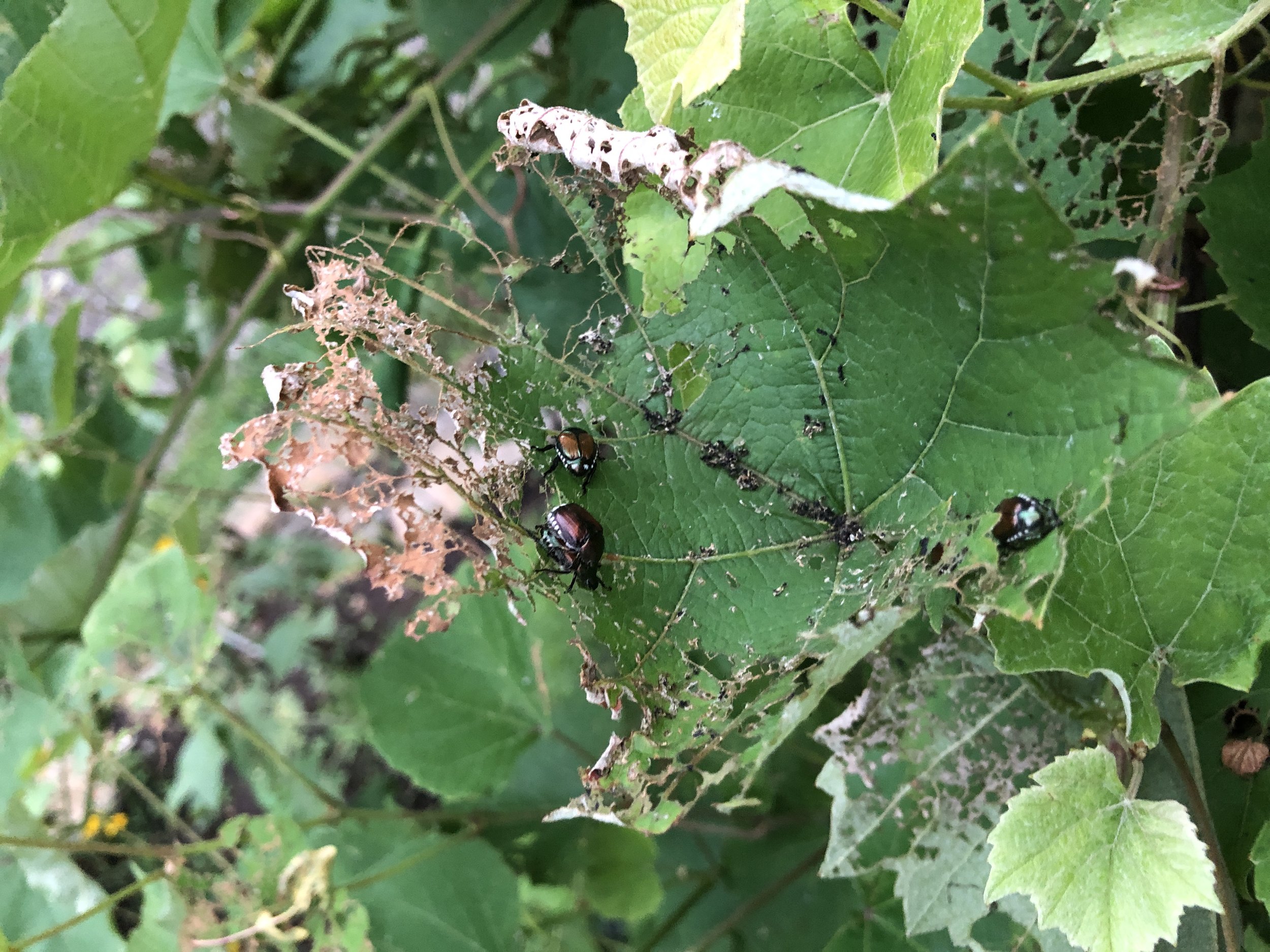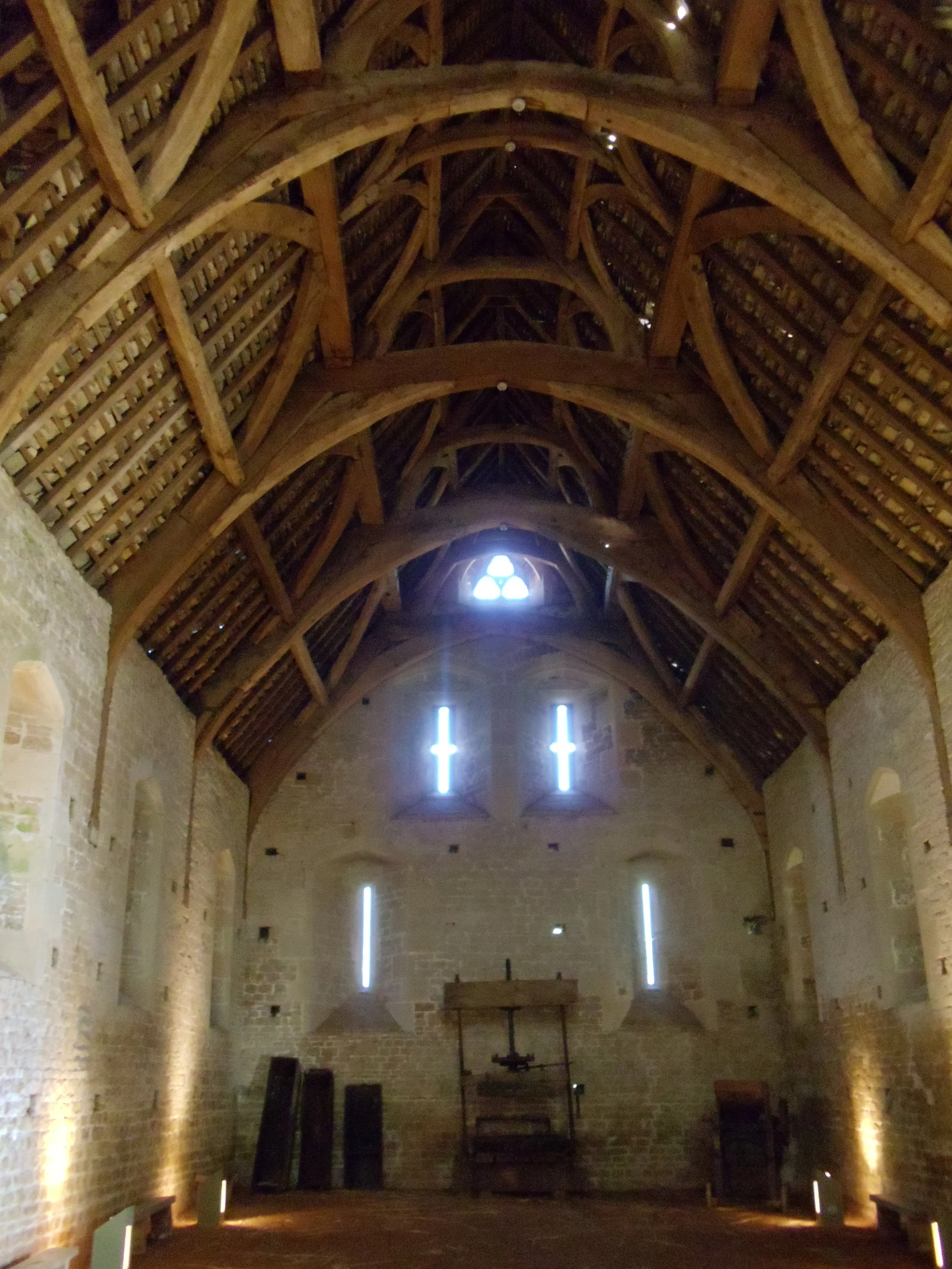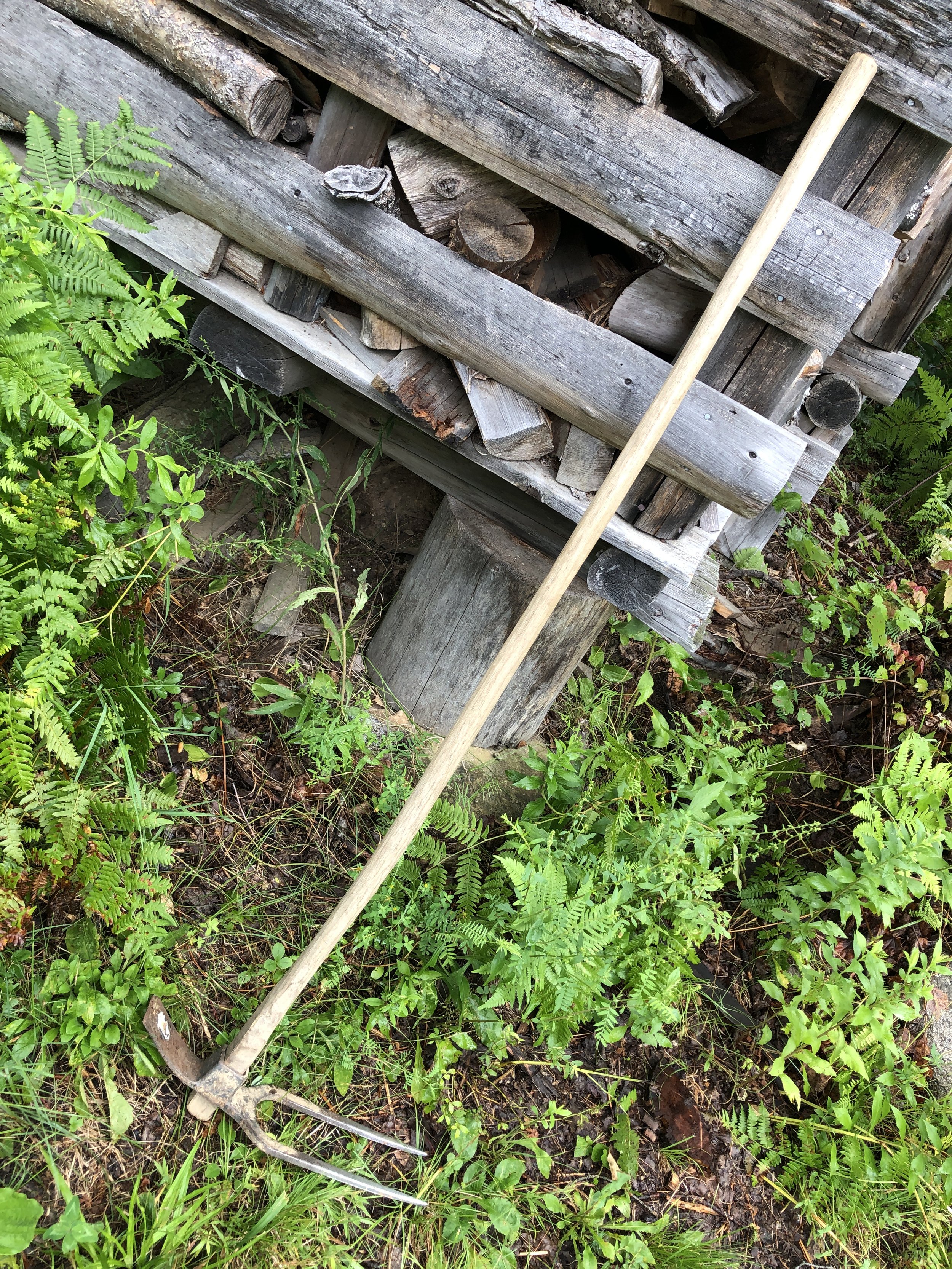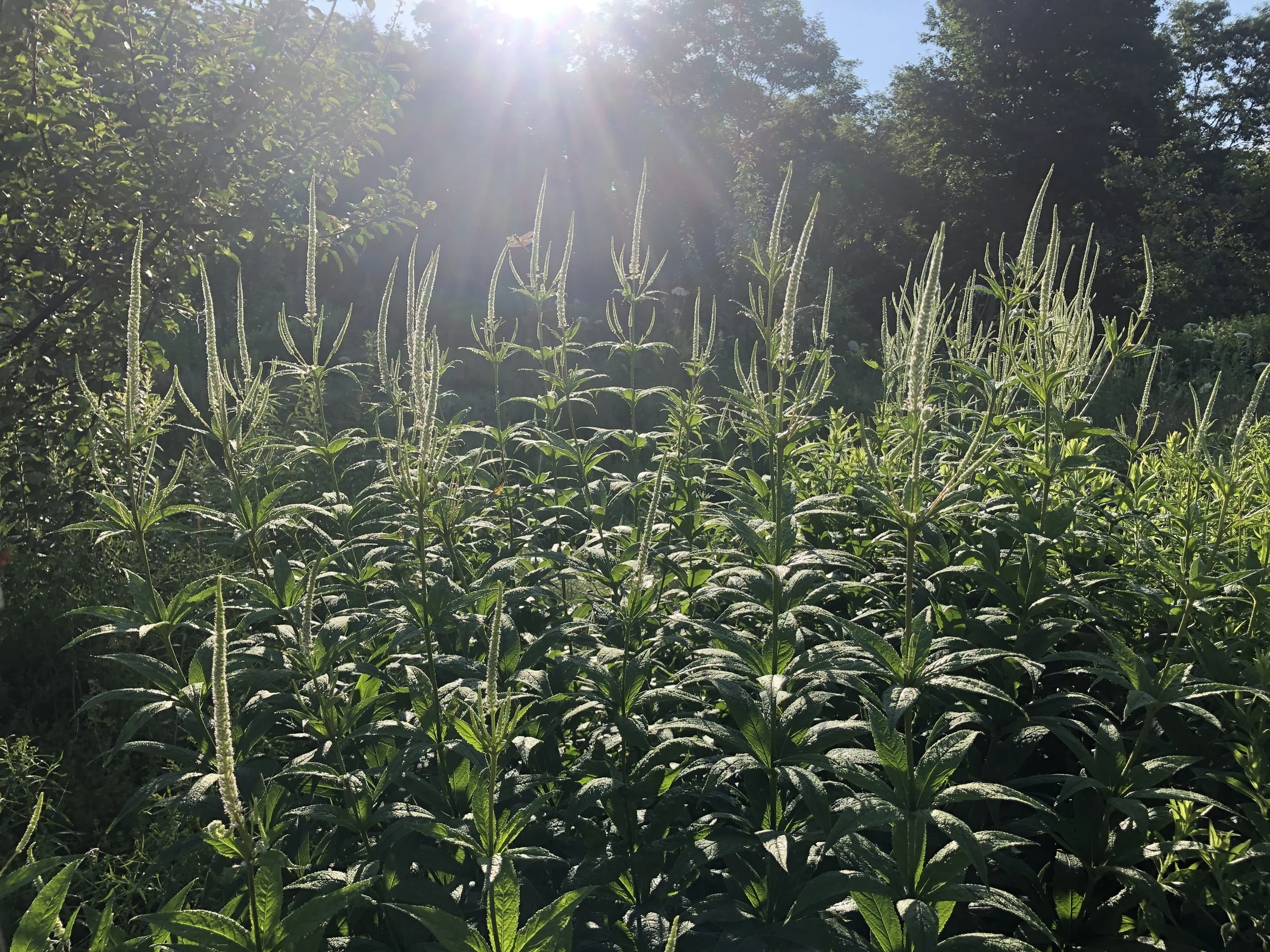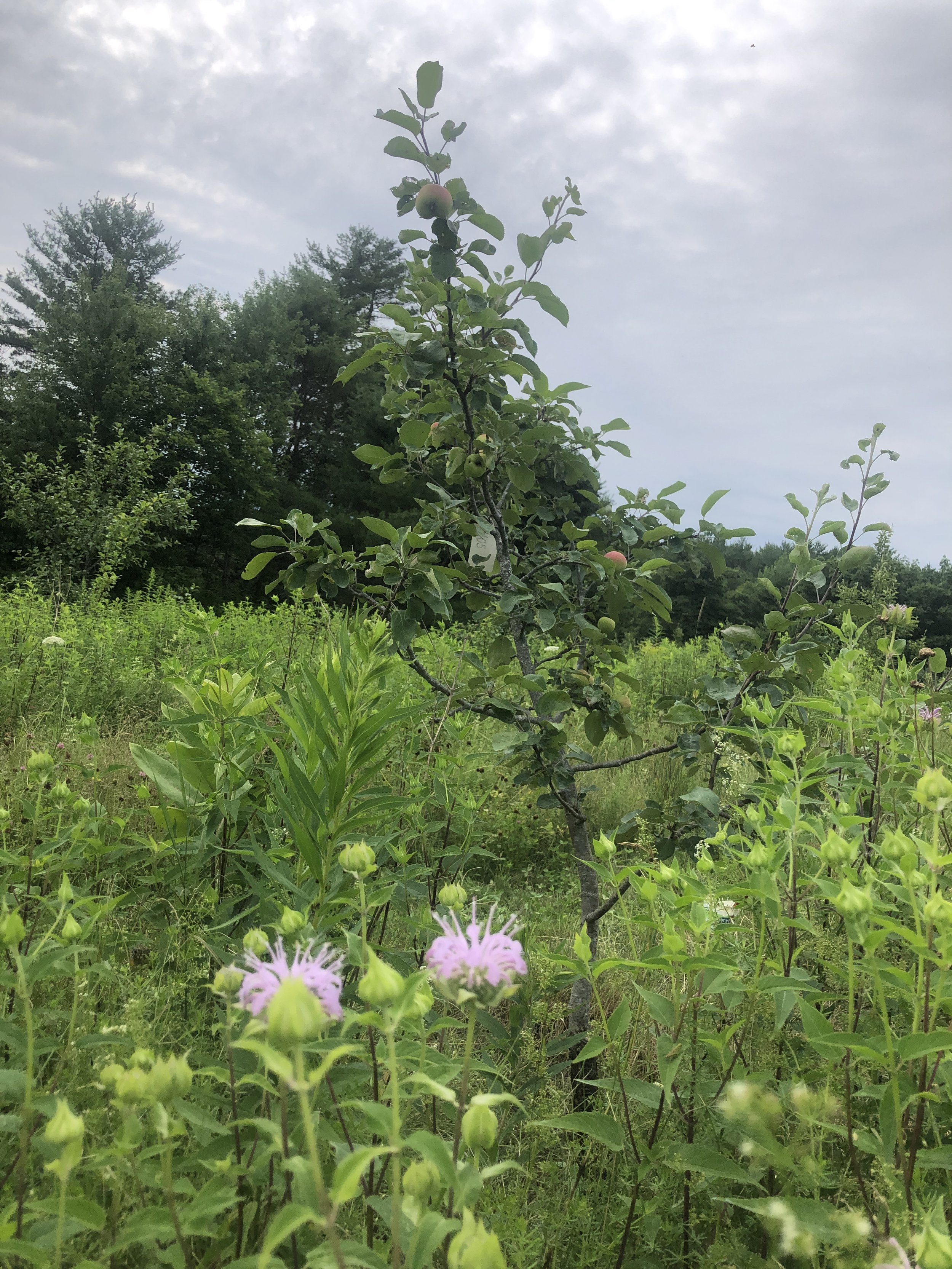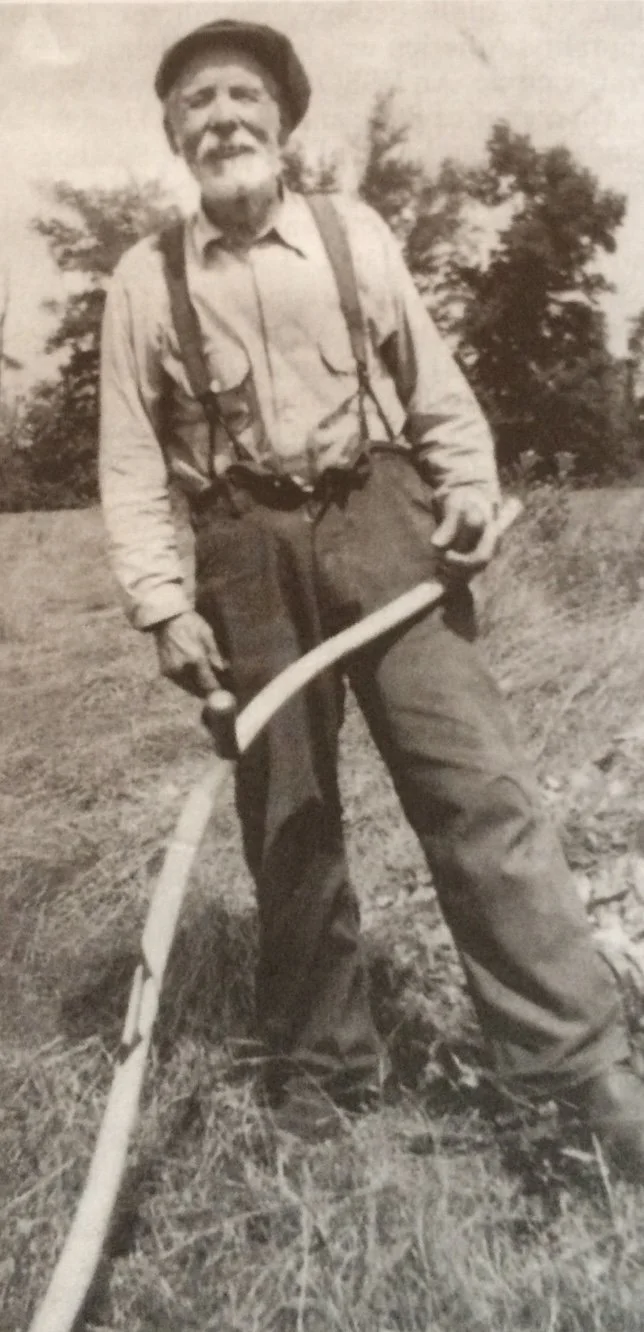TODAY IN THE ORCHARD
Today’s weather pattern seems to be becoming the standard for the season: rain early for a couple of hours, followed by warm, humid and partly cloudy. During the rain, I showed Alyssa how to use my identification key, and she was able to identify the Yellow Transparents that ripened a few days ago. The key has its challenges, and it’s currently undergoing a major revision, but it has been a huge help in doing hundreds of ID’s over the years.
Once the rain clouds left, we weeded in the nursery and planted a cover crop of buckwheat in the recently harvested garlic beds. The cover crop protects the bare soil and adds nutrients for next year. Everyone—even Big Ag—seems to agree that bare soil doesn’t do anyone any good.
We also began a log-building project today. We cut two hemlocks and peeled them with our bark spuds—the bark is still slipping nicely—and then set up the basic framework for what will be an addition to one of the cabins on the farm. Living in a clearing carved out of the forest, we are surrounded with an excellent source of logs for building. We also have a grade A supply of firewood, trellis material, tool handles, bean poles, garden stakes, pea-fence material and, of course, endless compost poles. We also get to breathe a blend of air, brought to us every morning by the hemlock trees as well as the pine, spruce, fir, maple, oak, beech, birch and, of course, a whole lot of apple trees. Not only is blended cider delicious, blended air is the best. Oh those blends!

